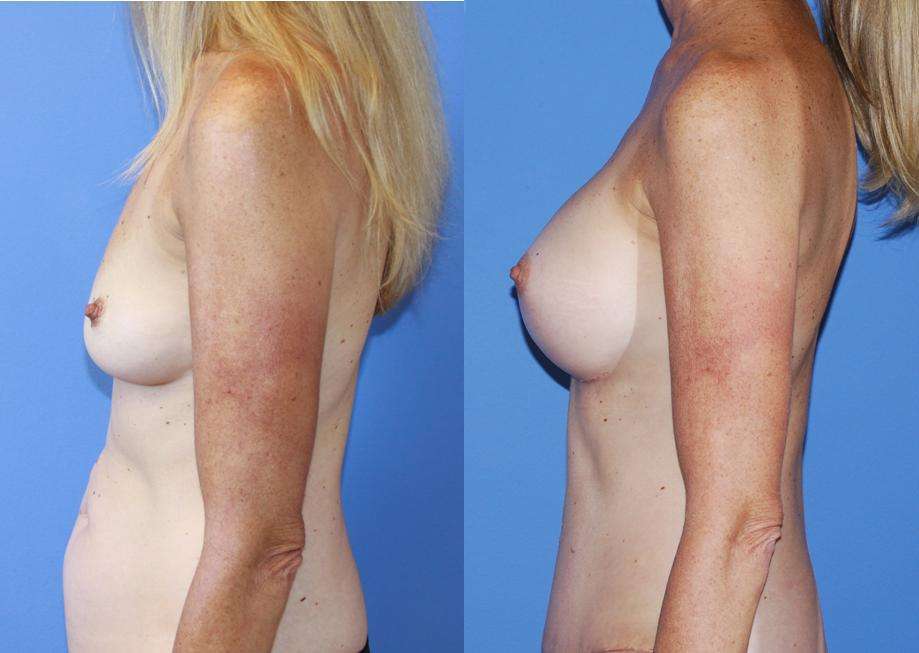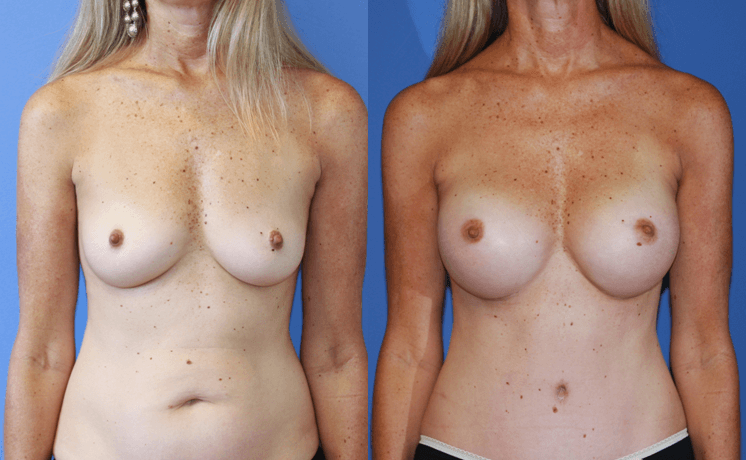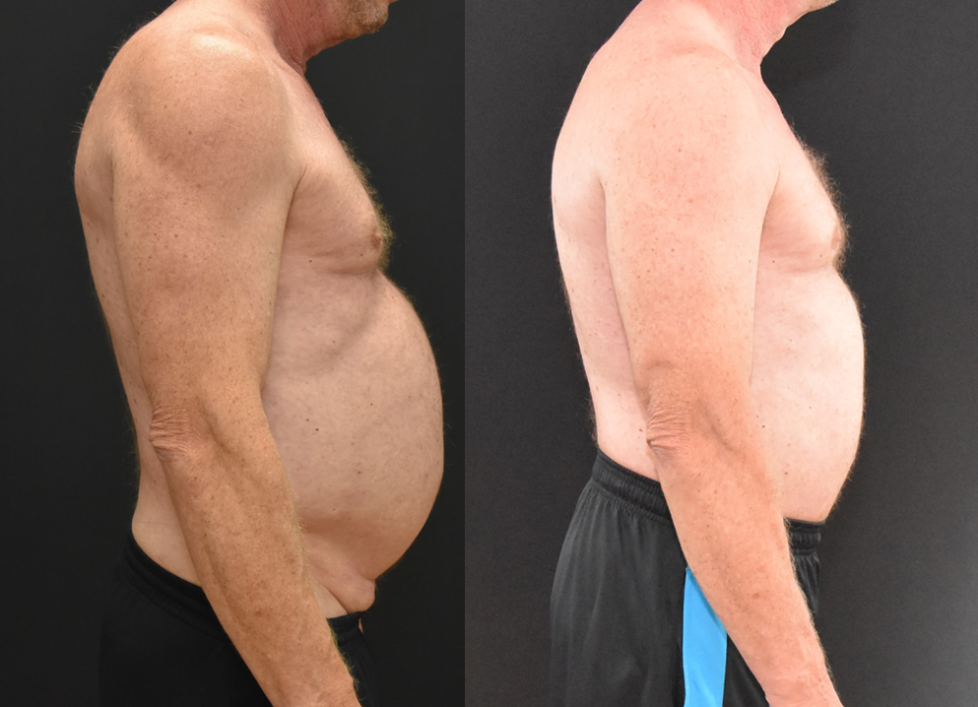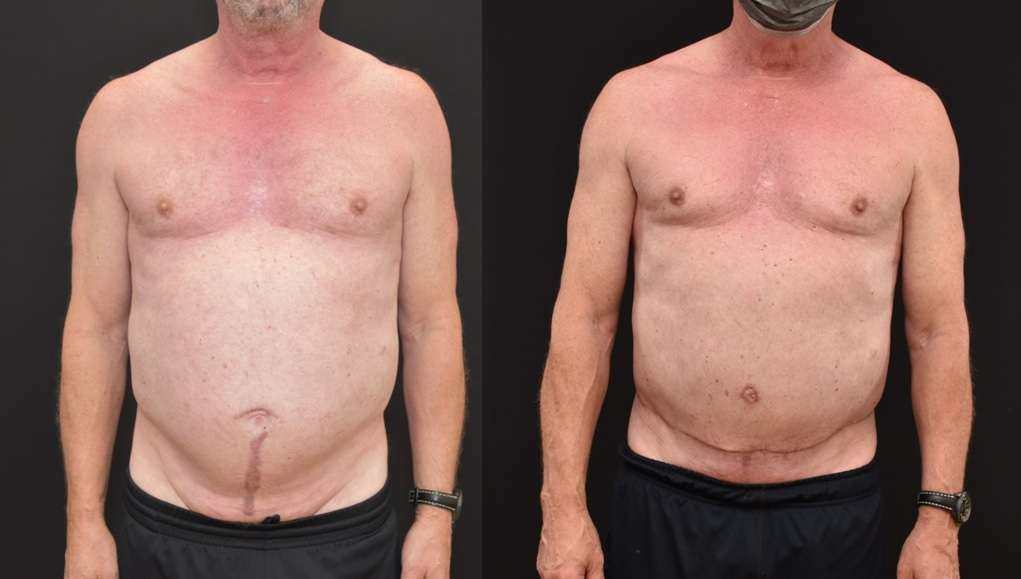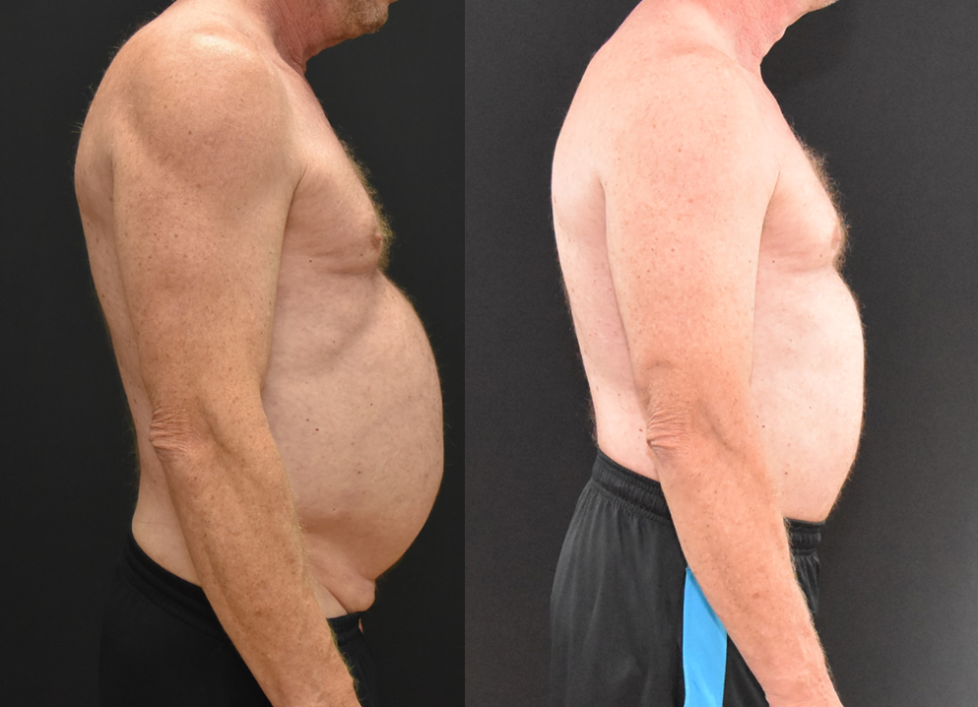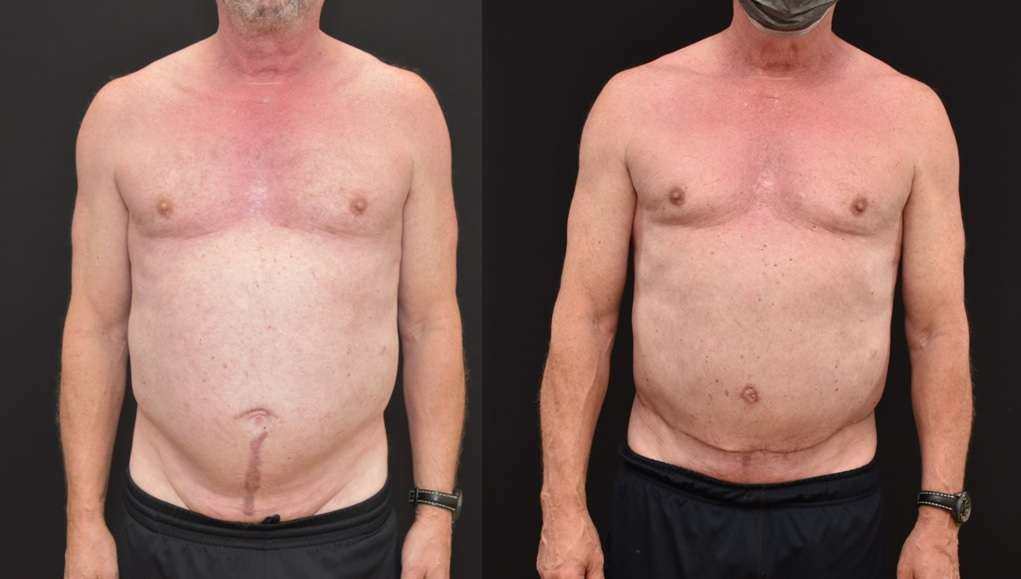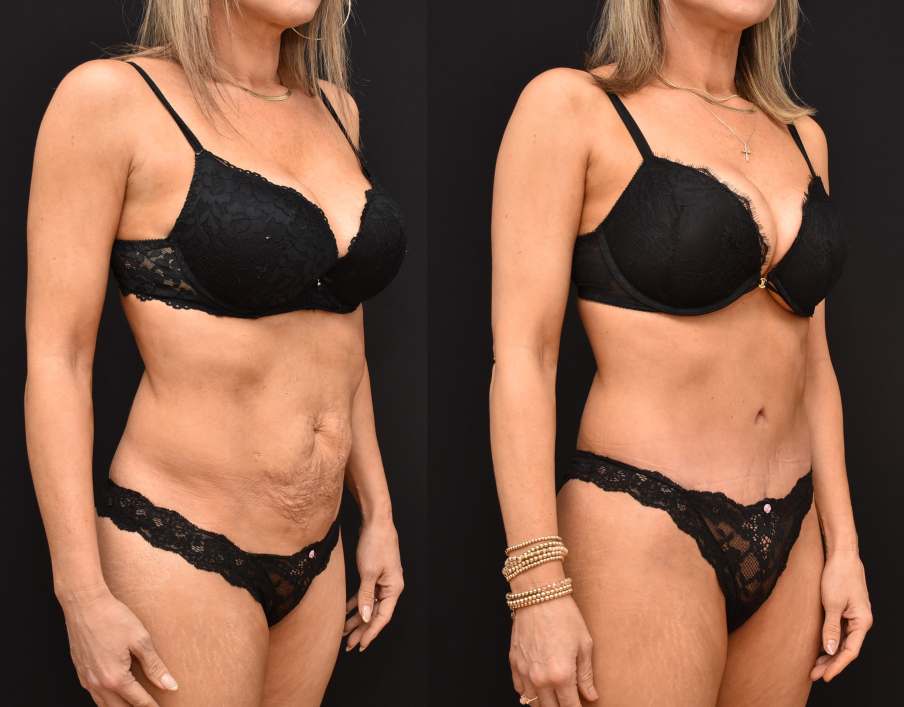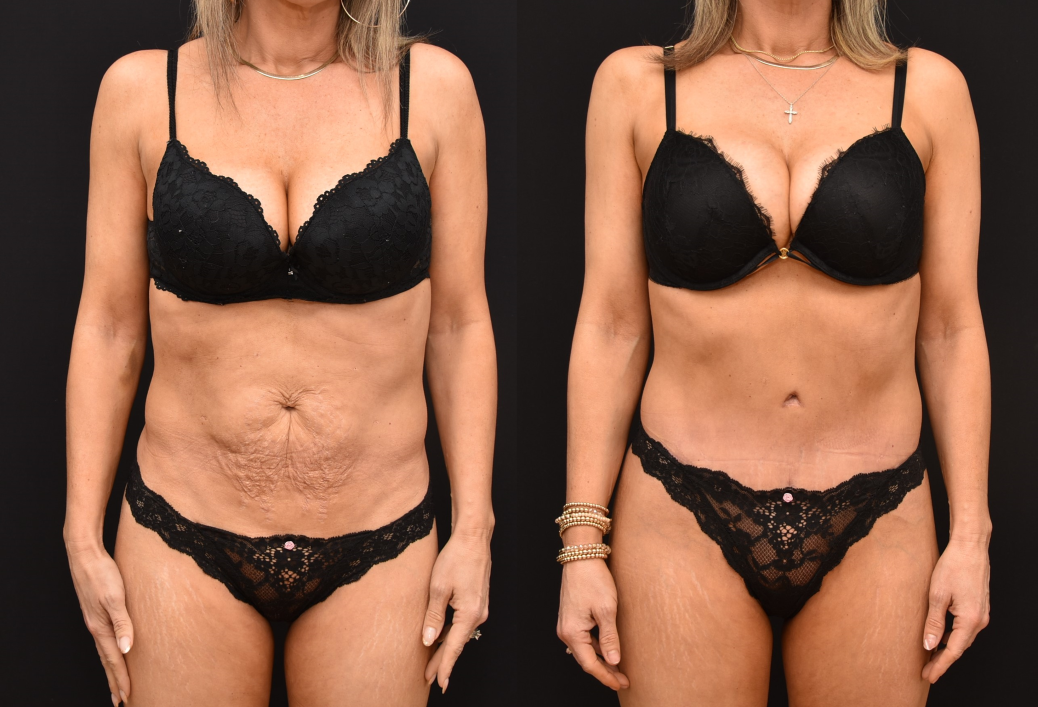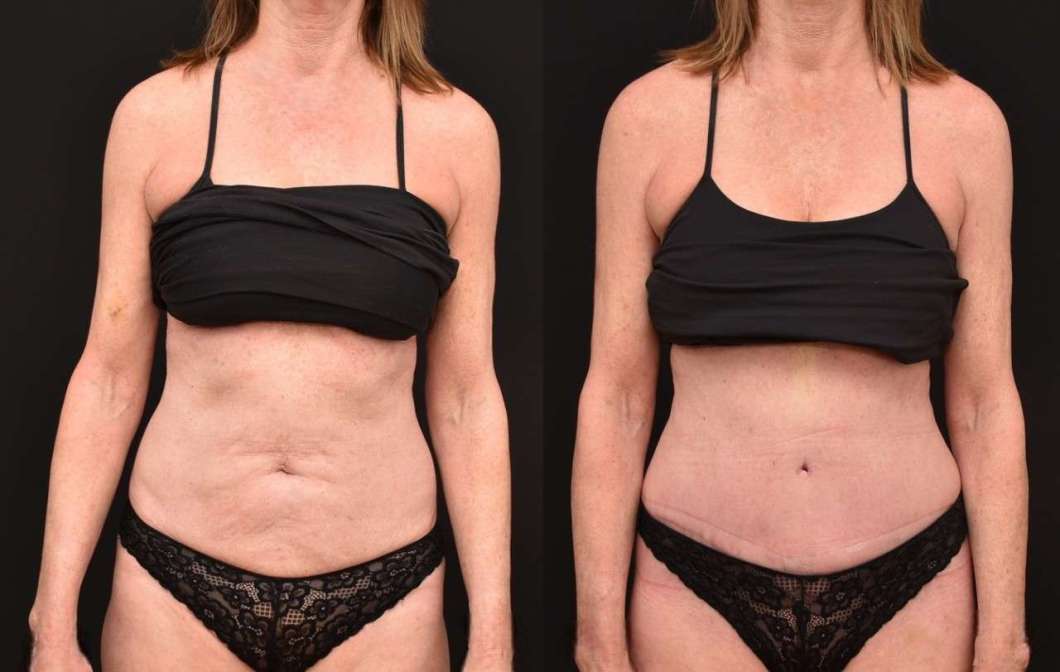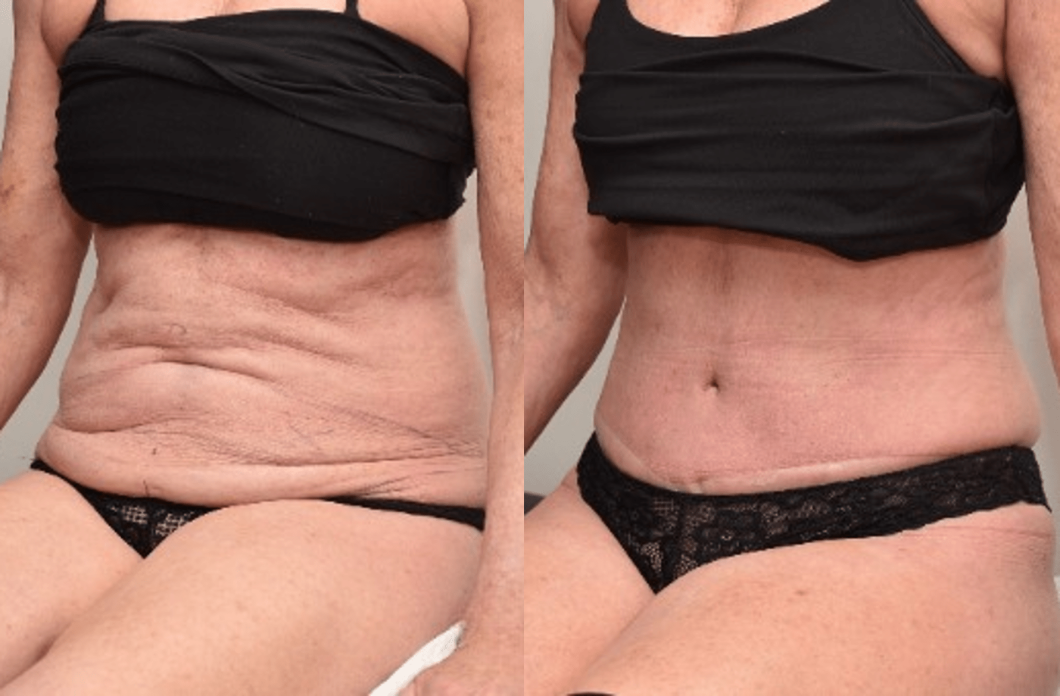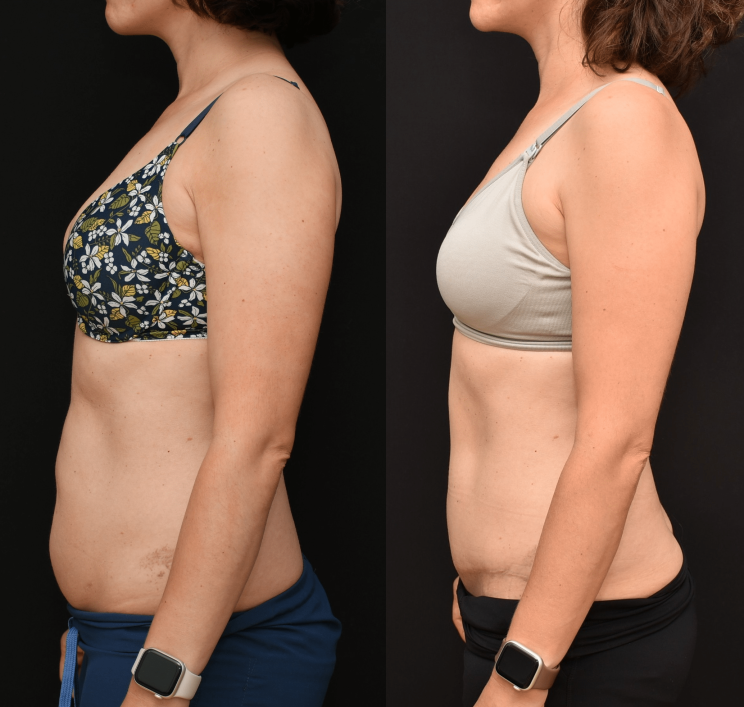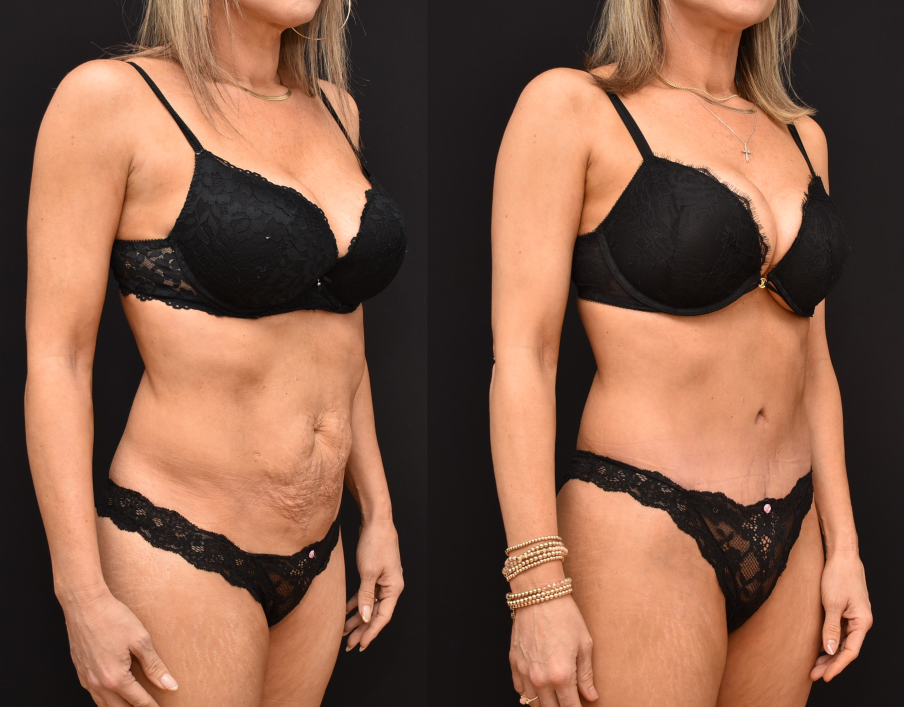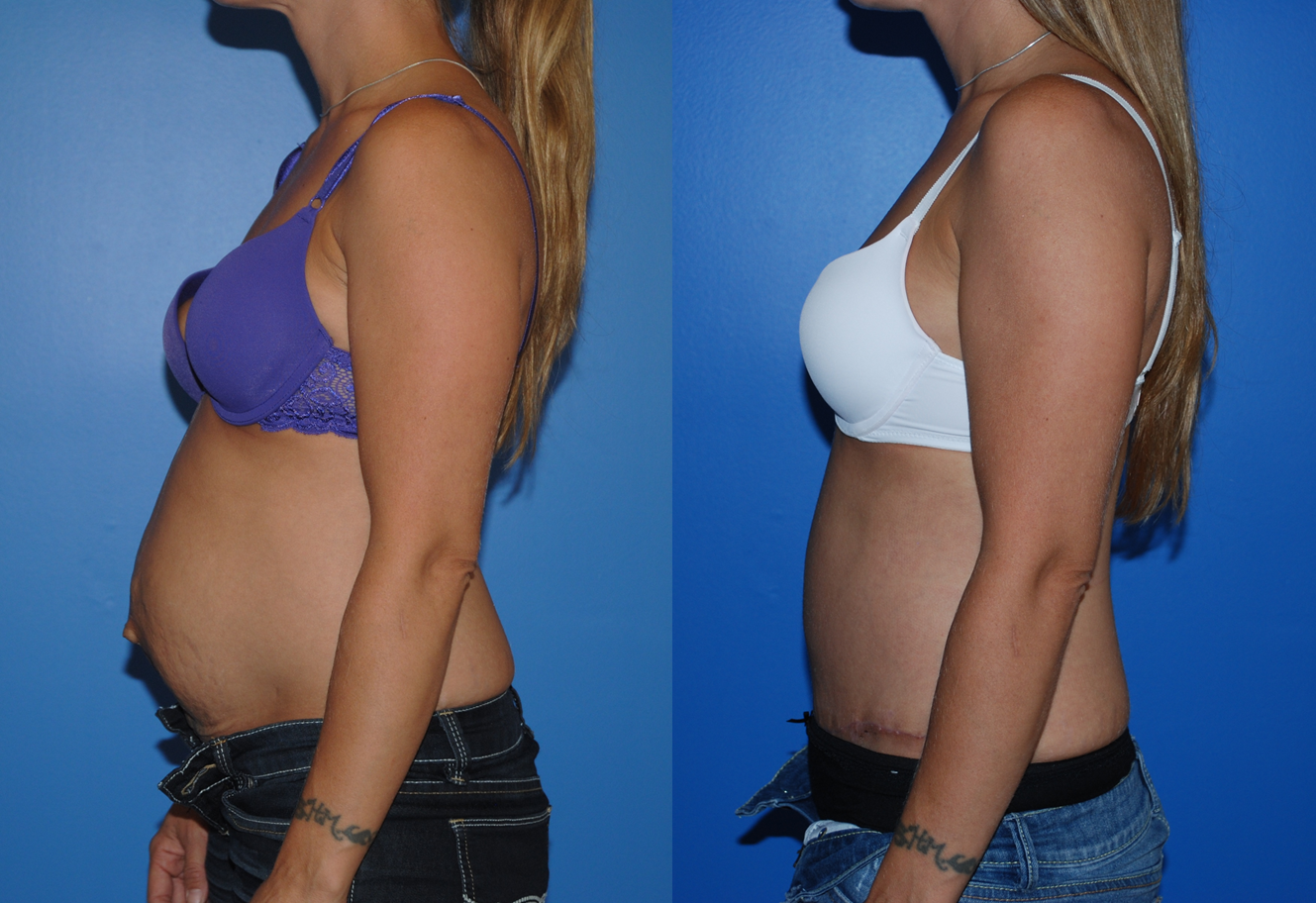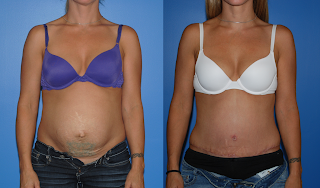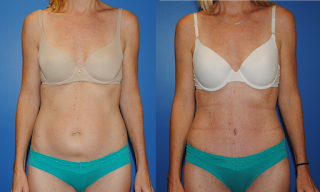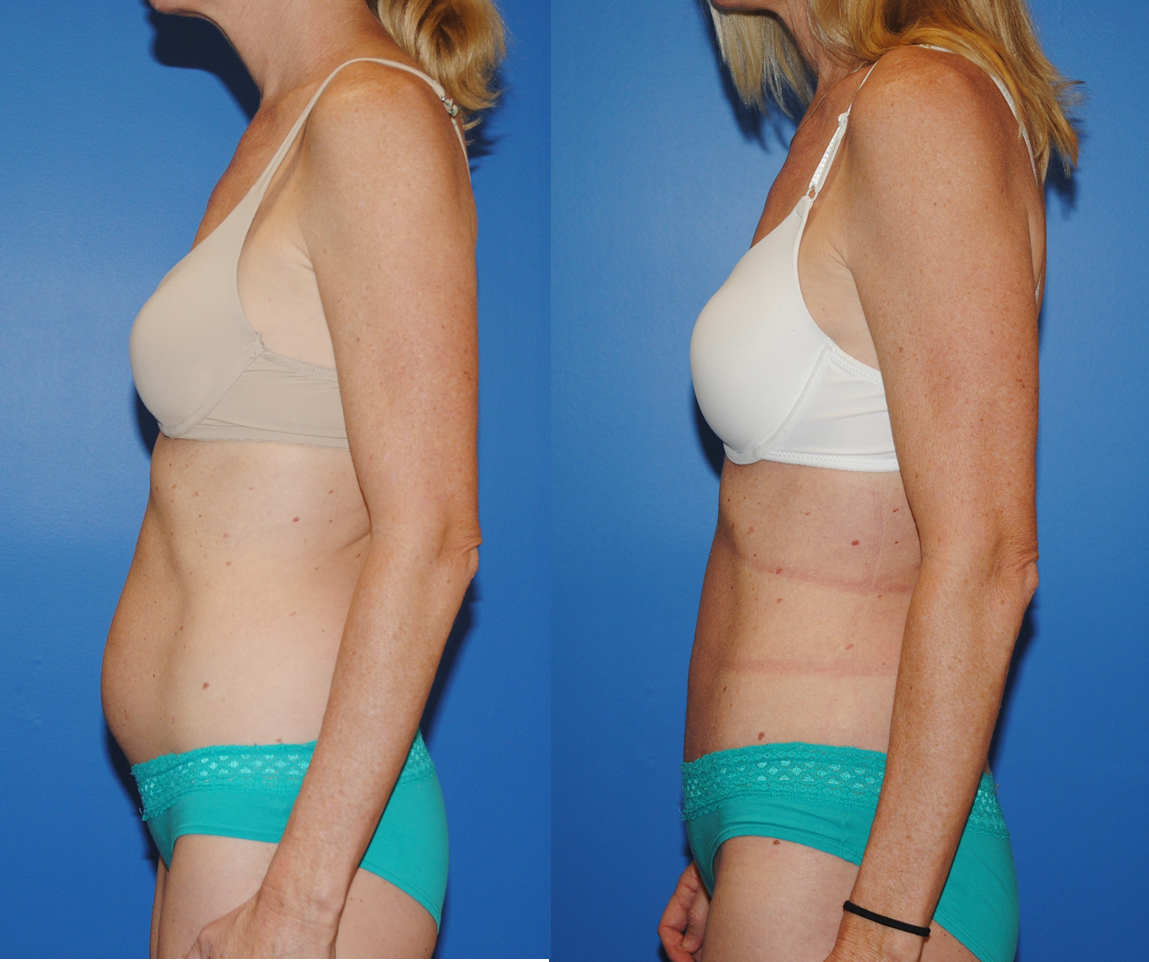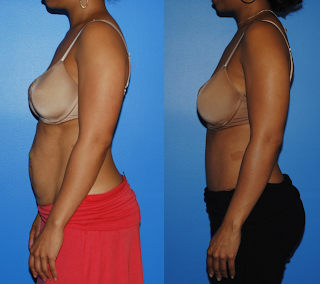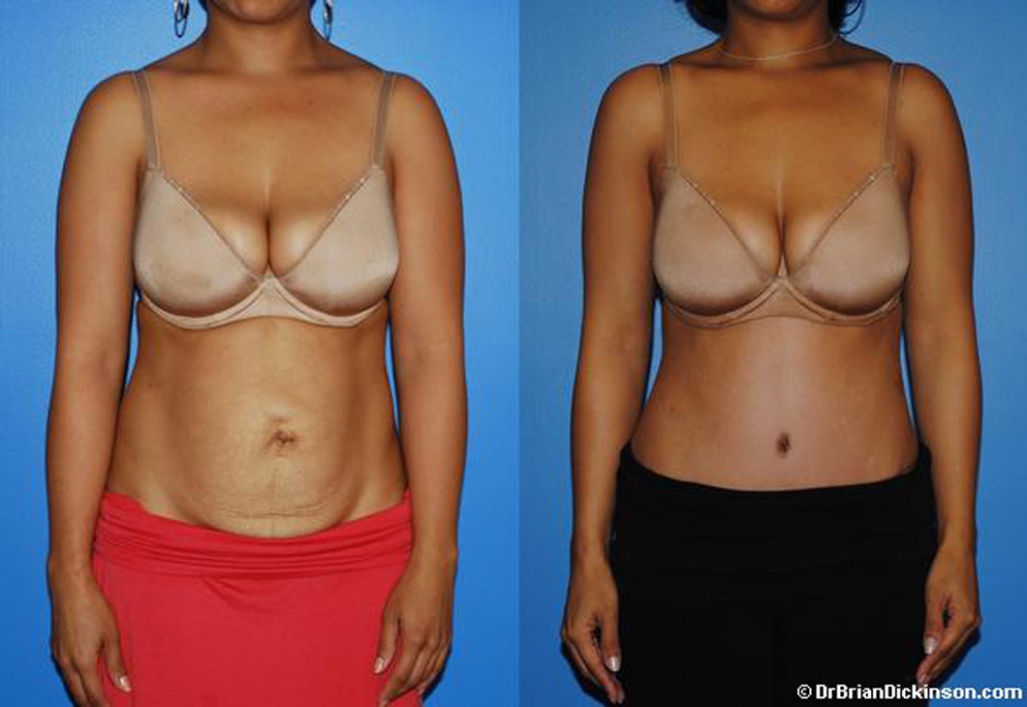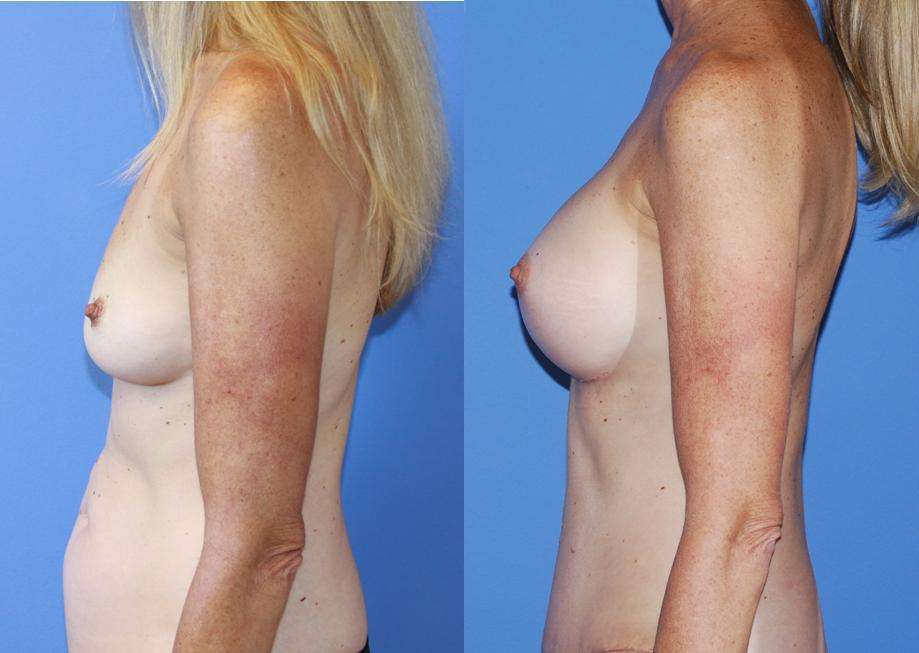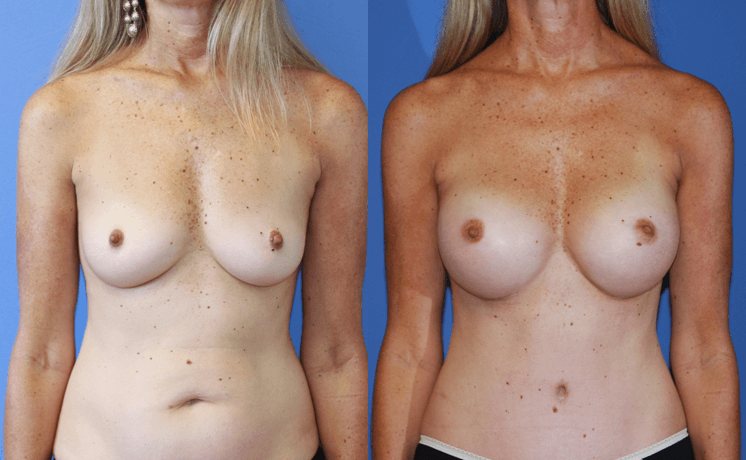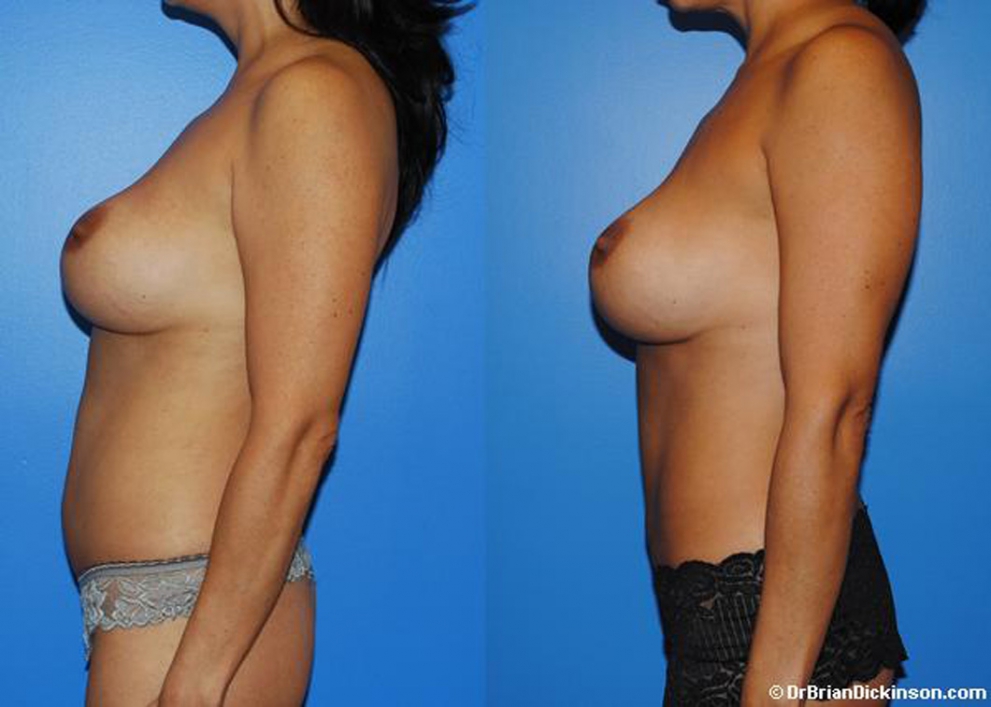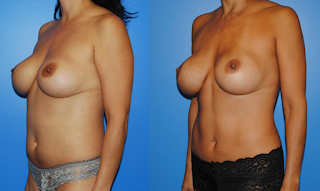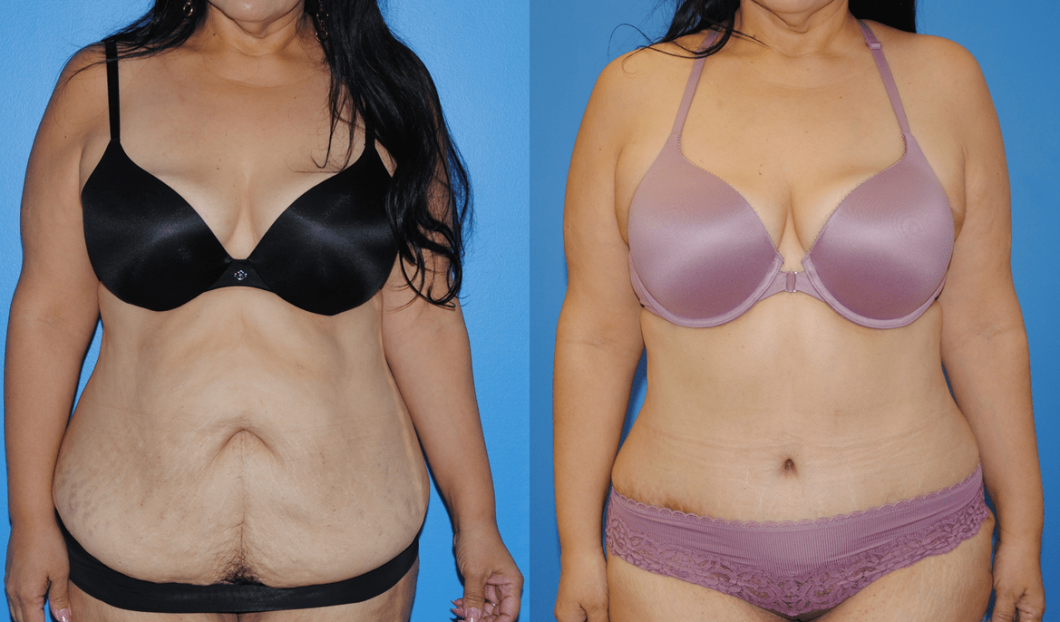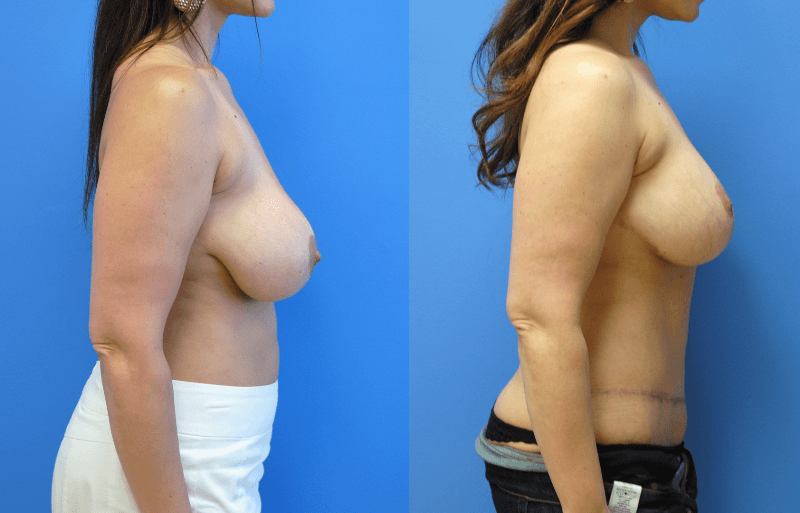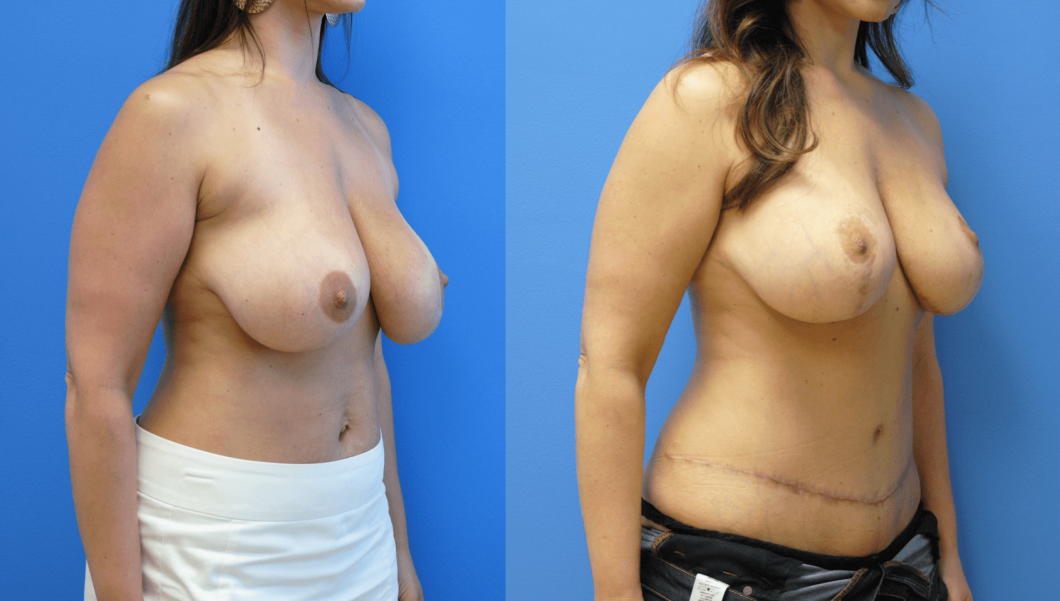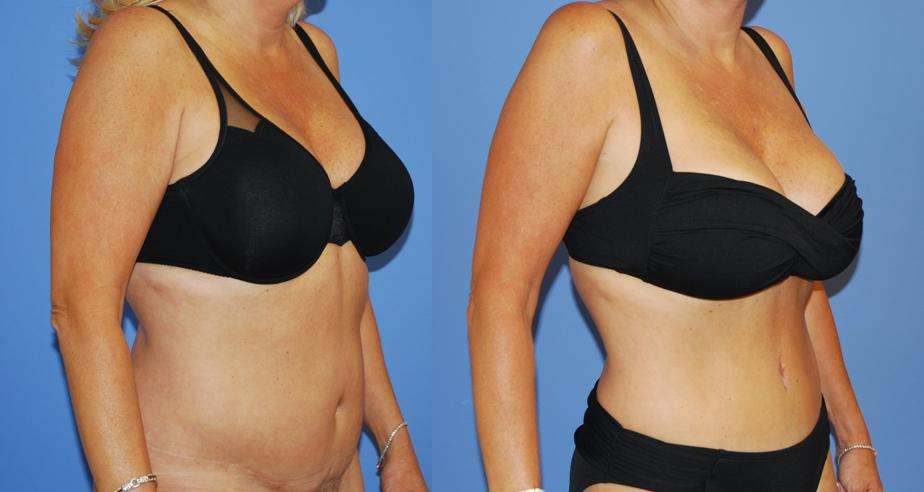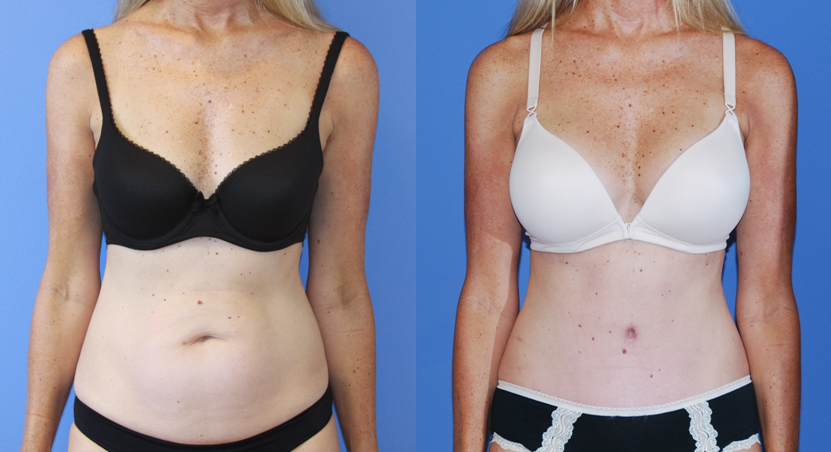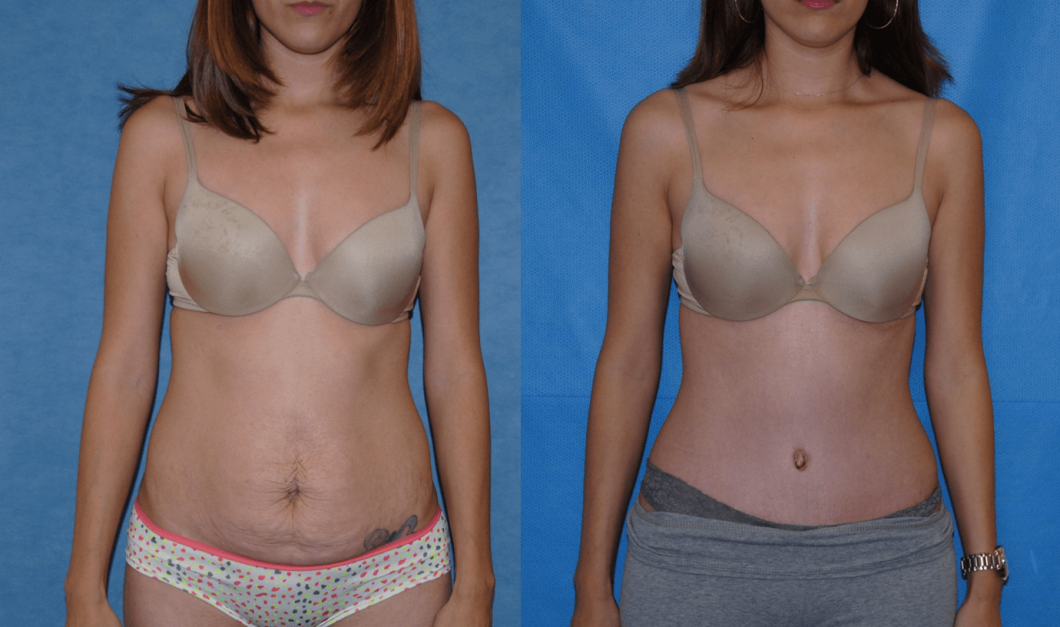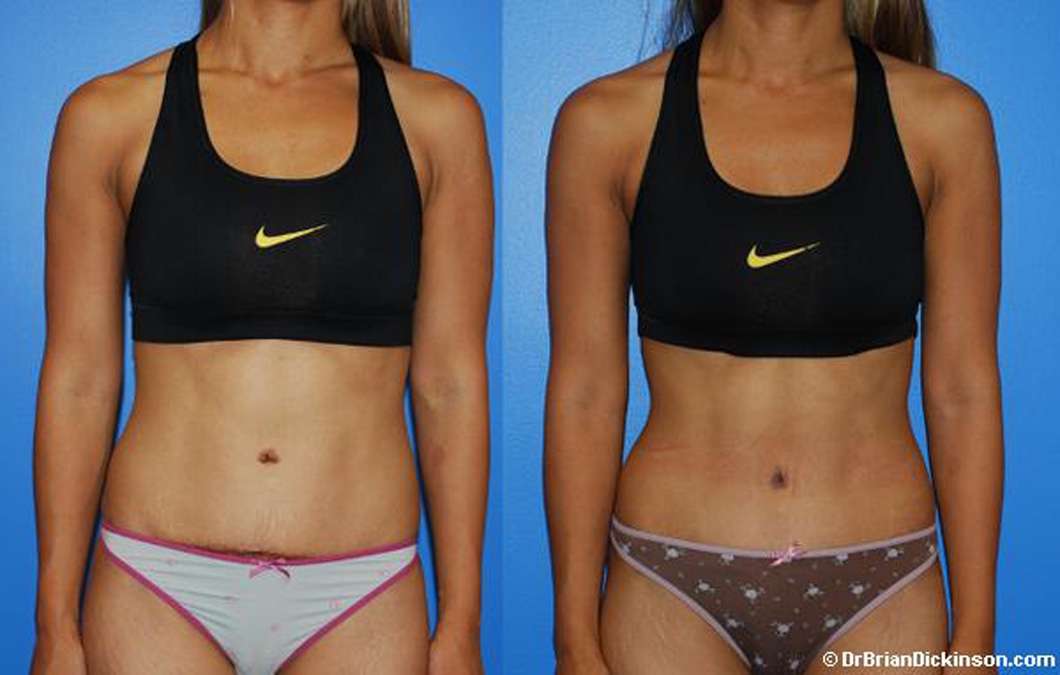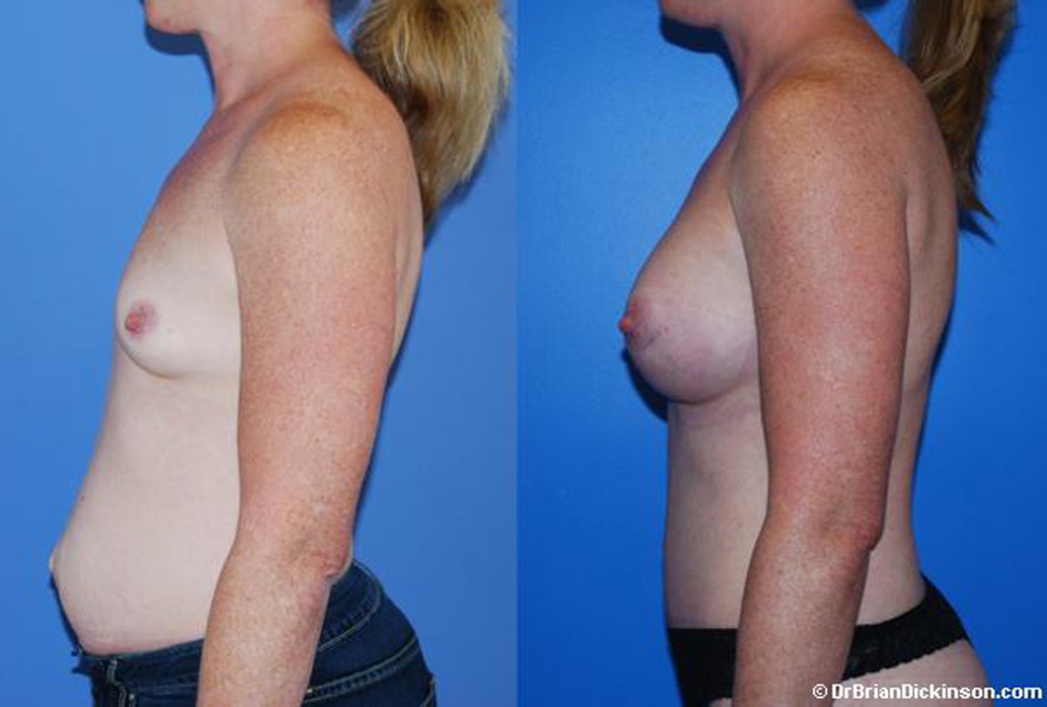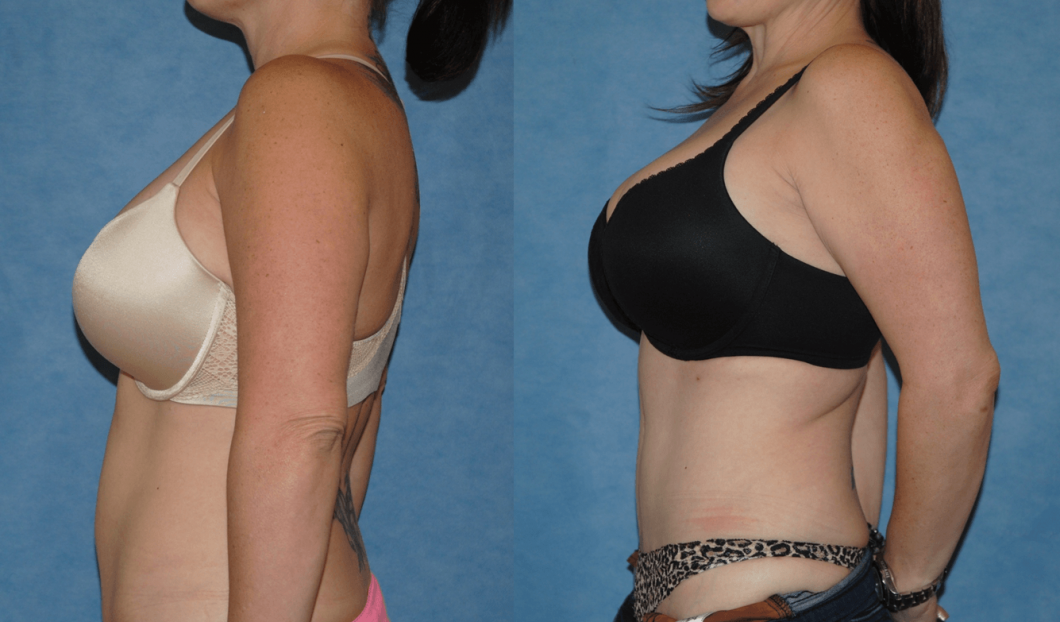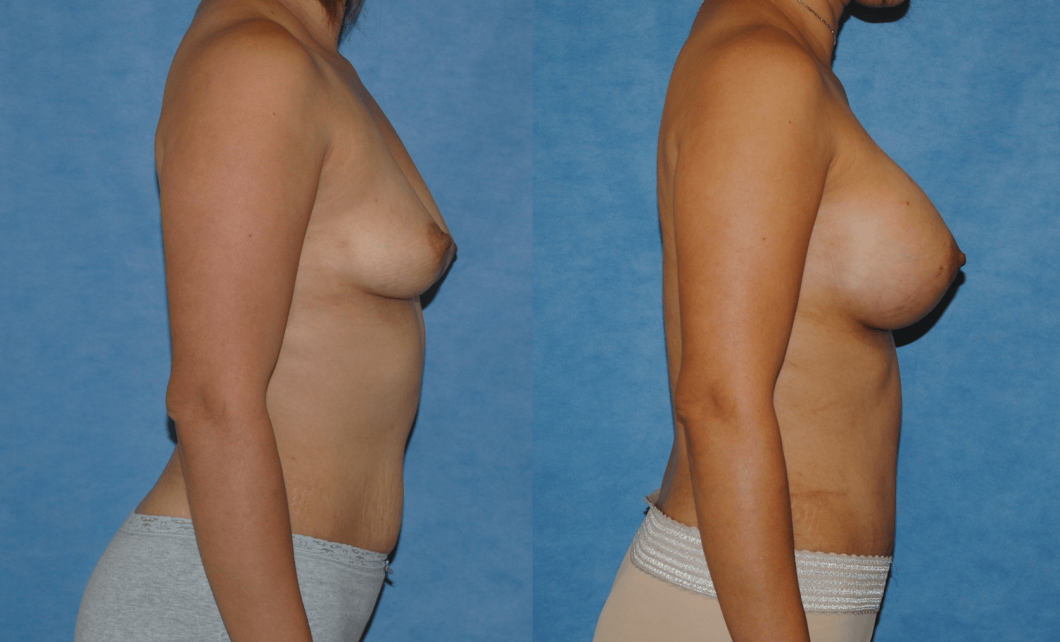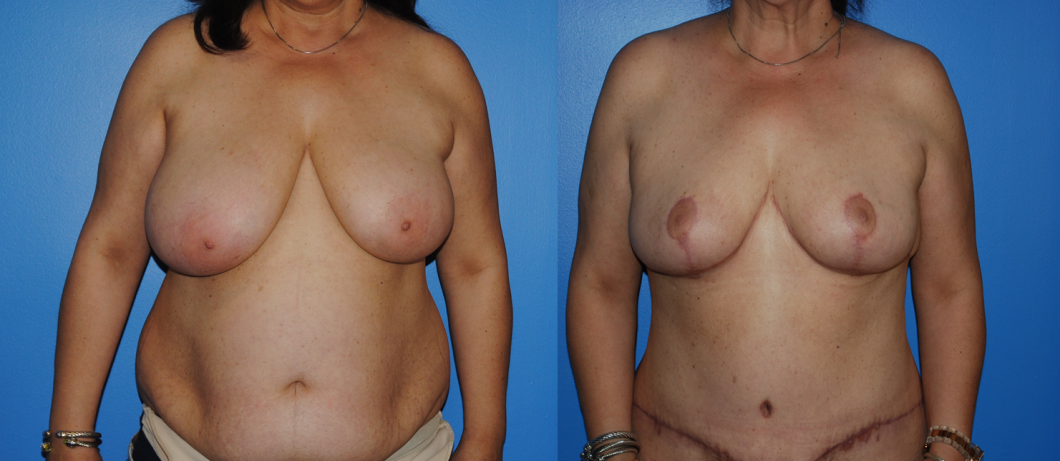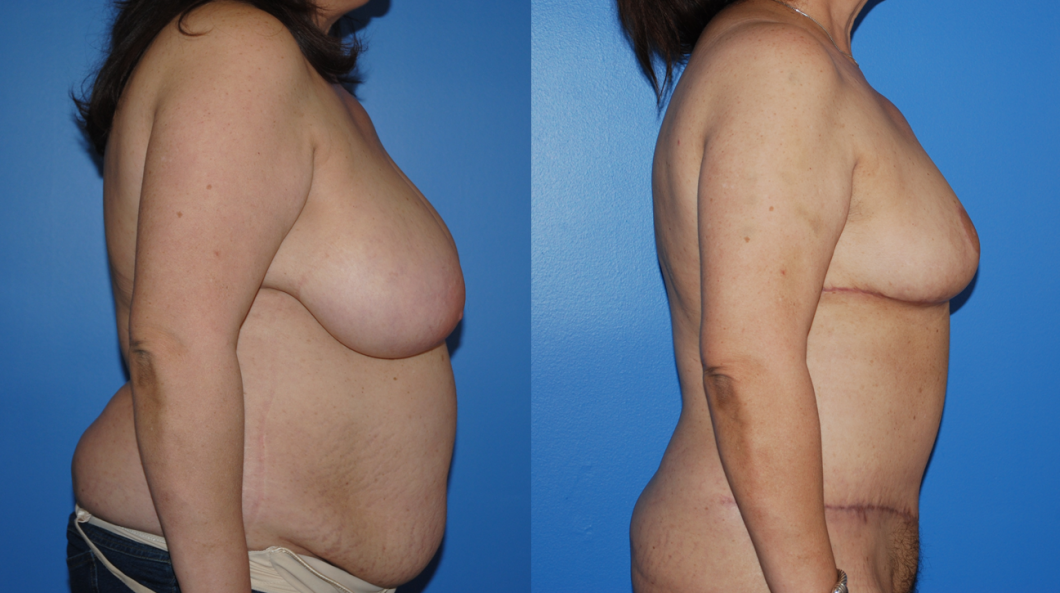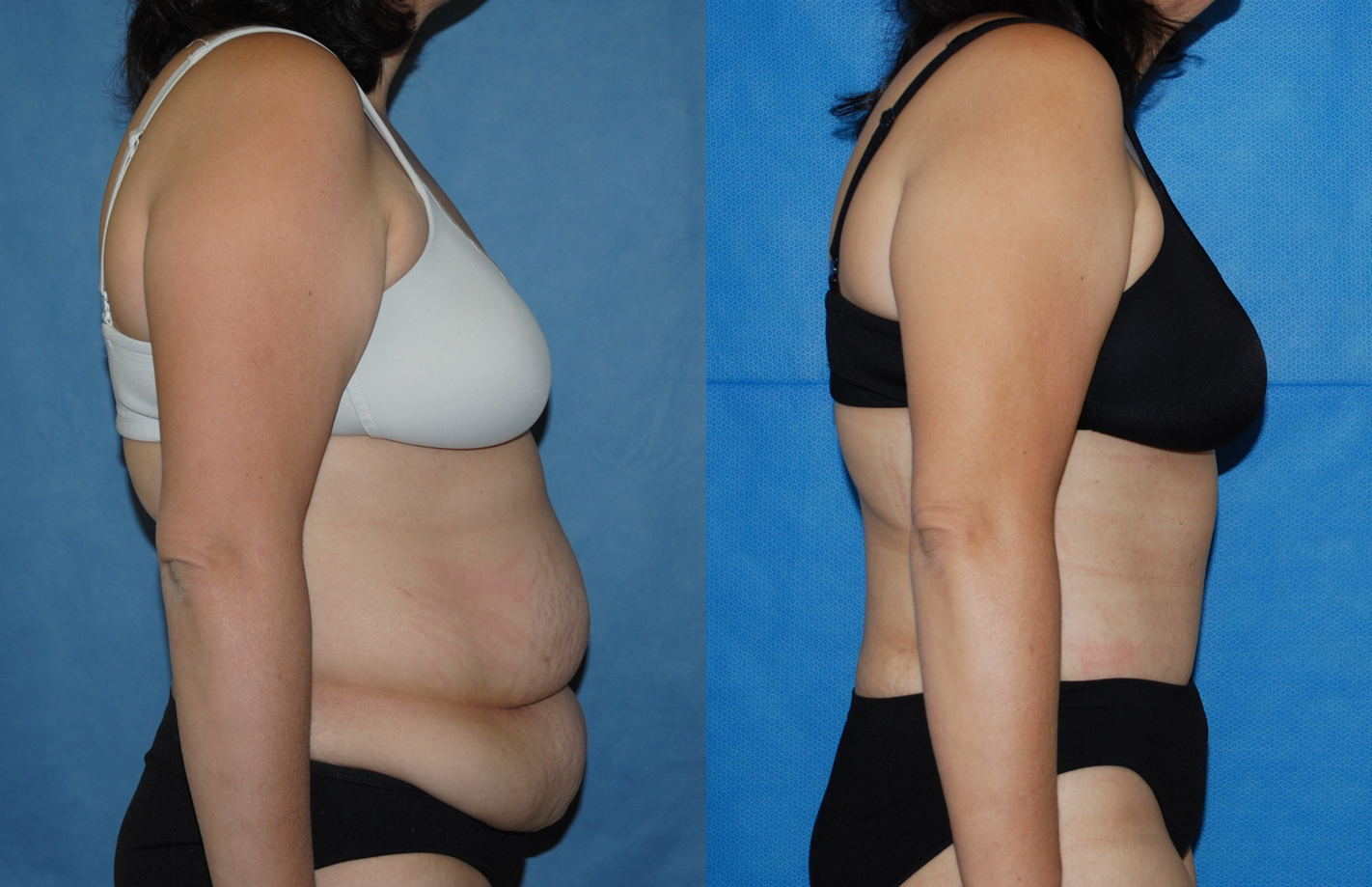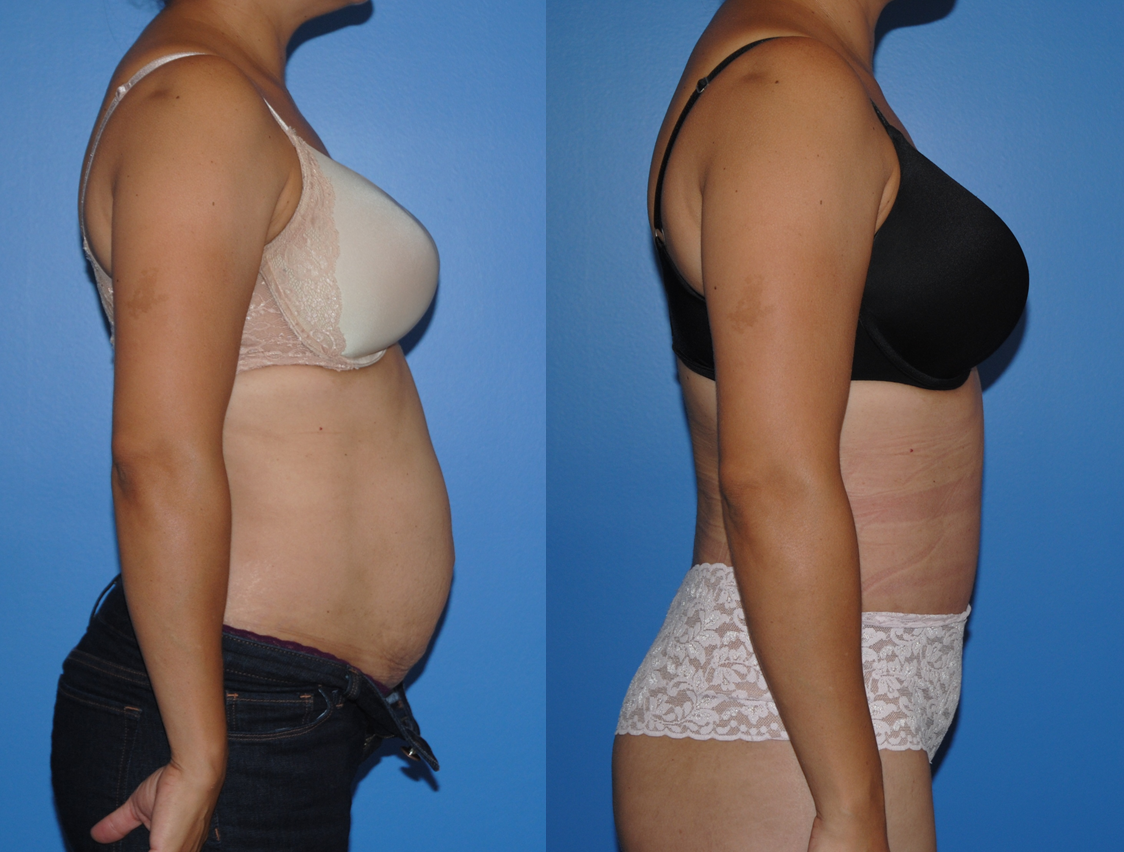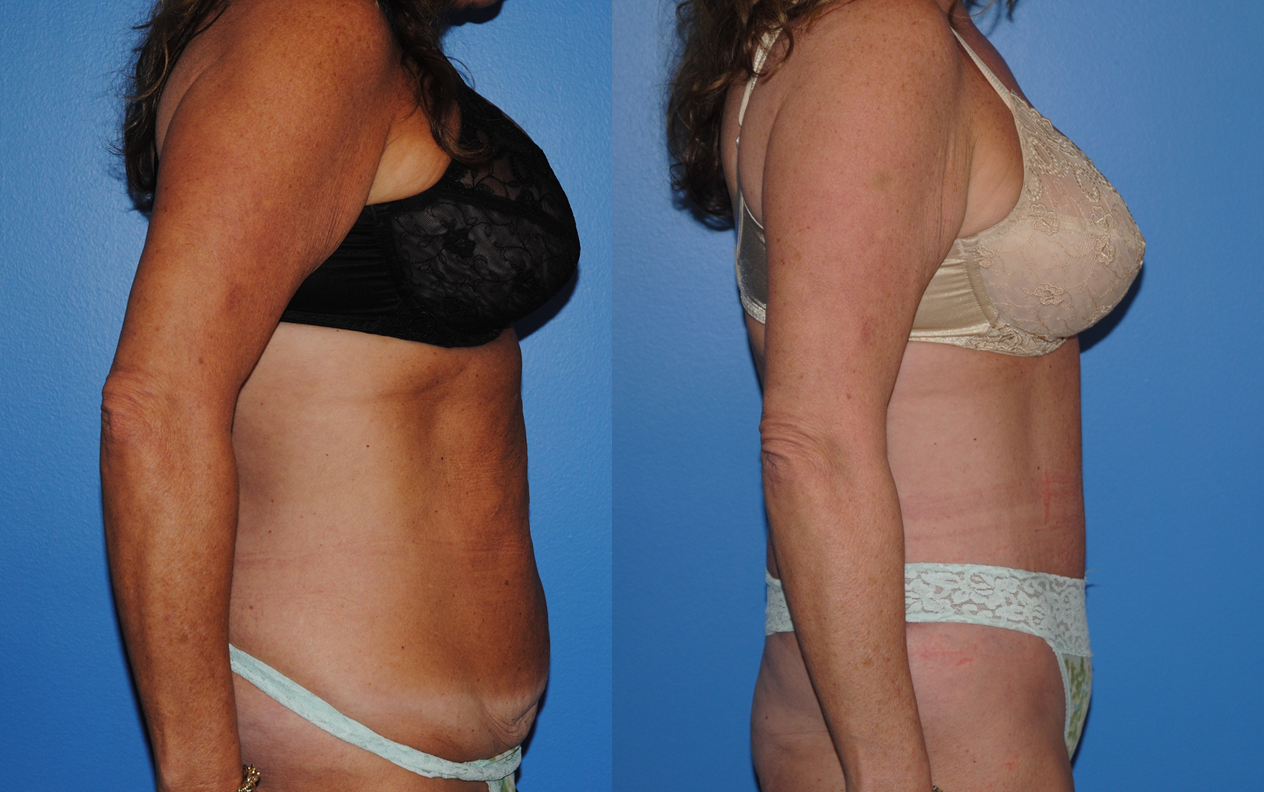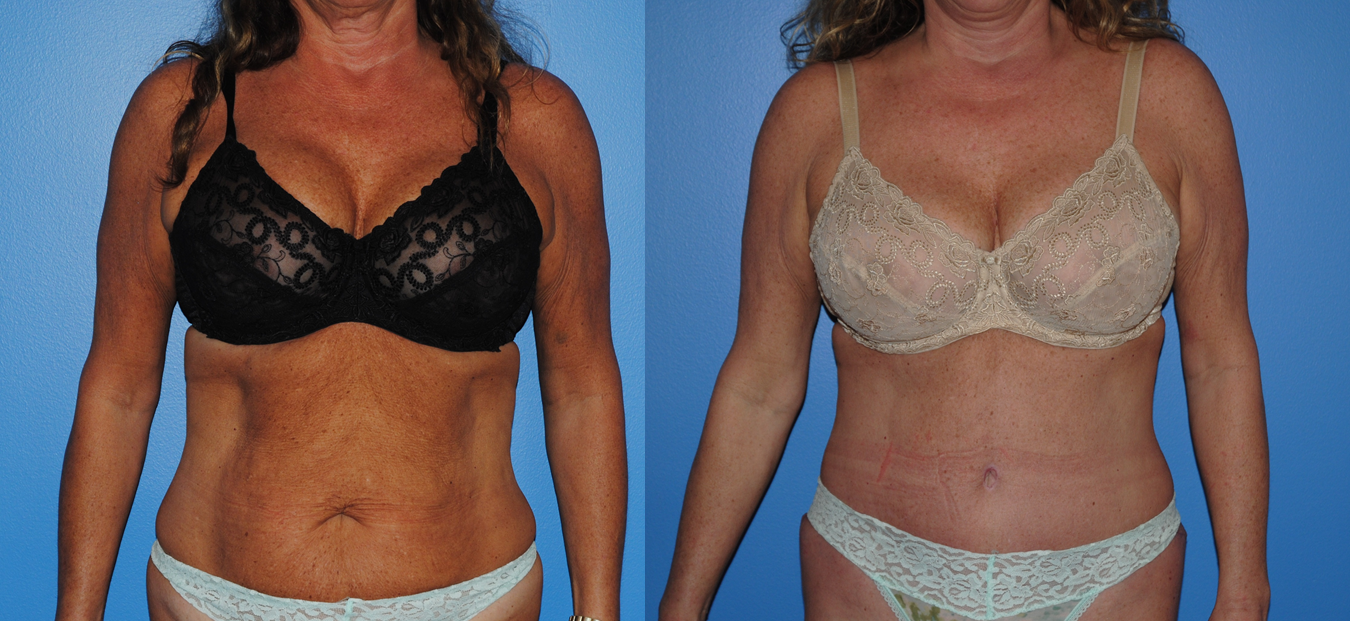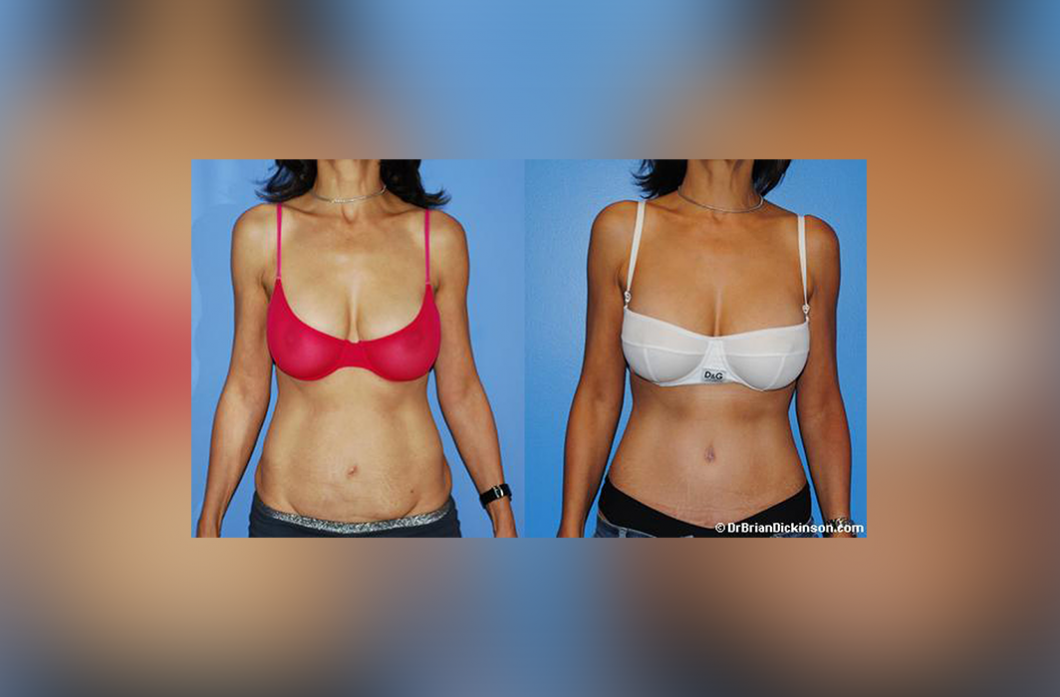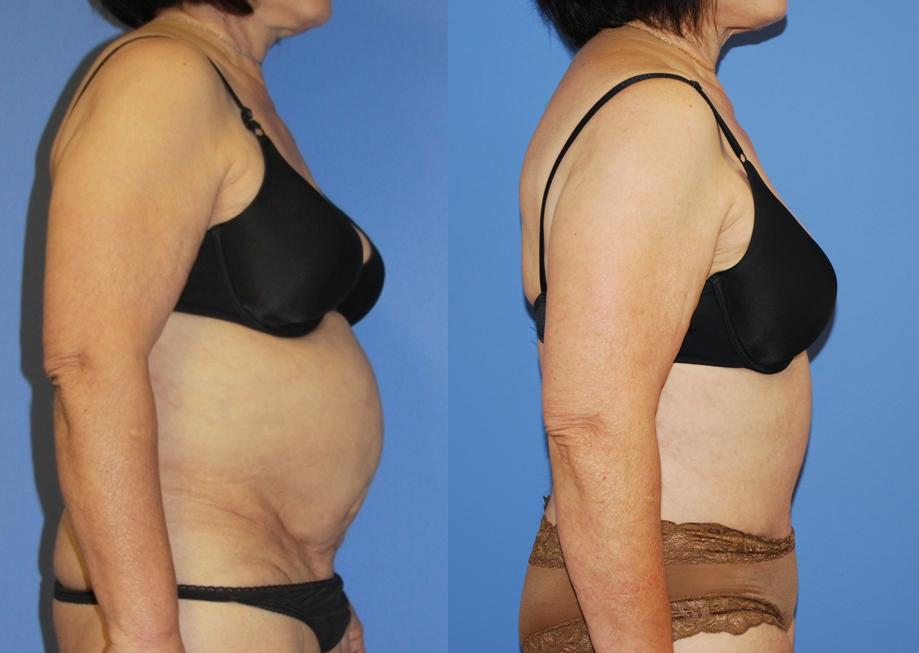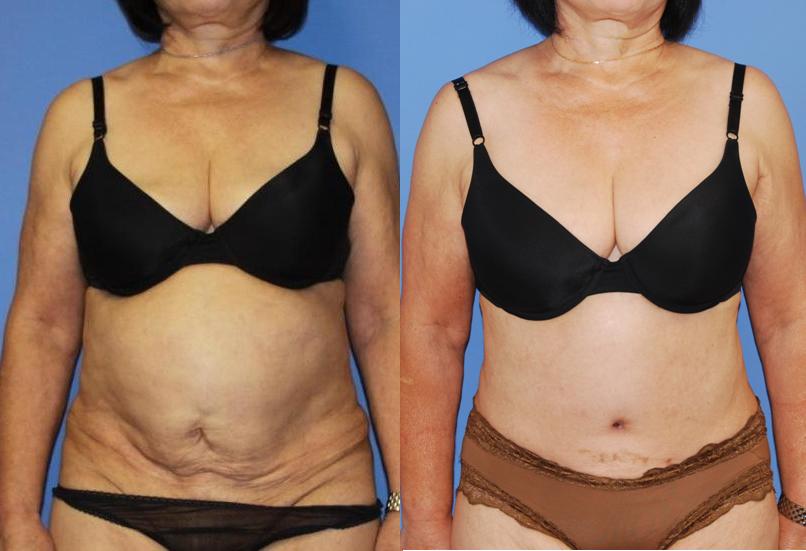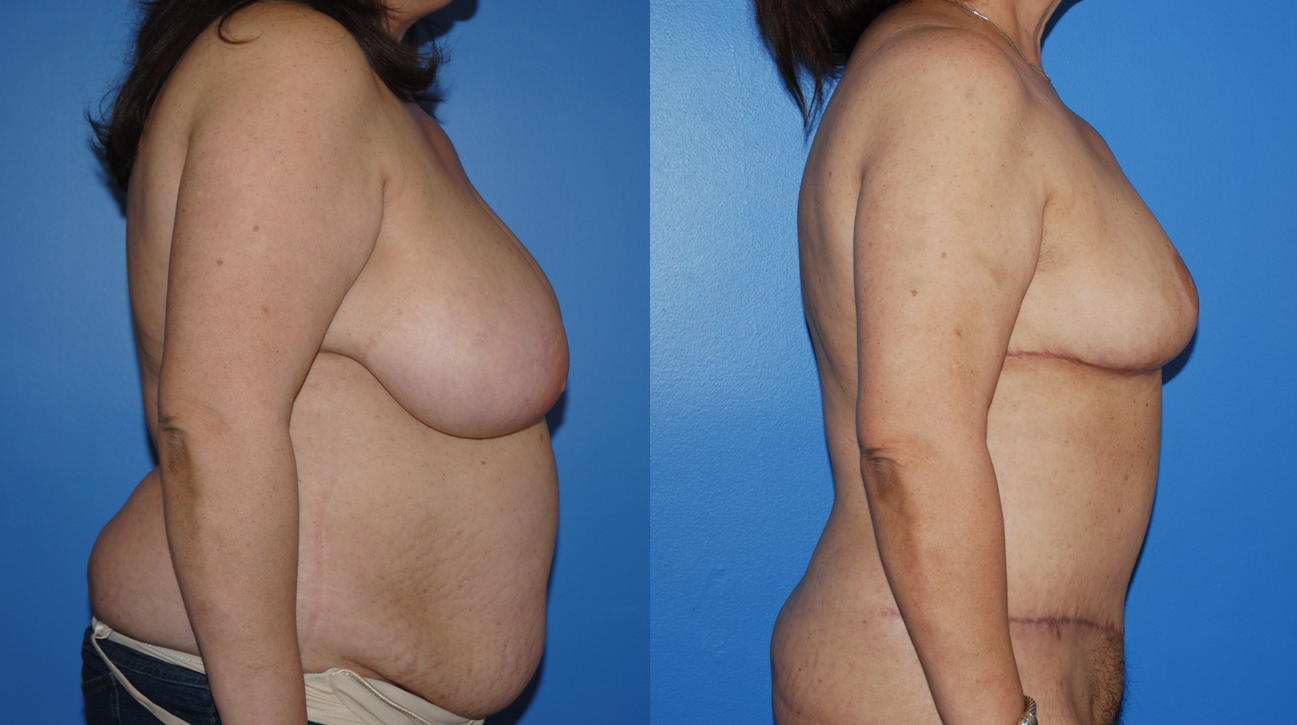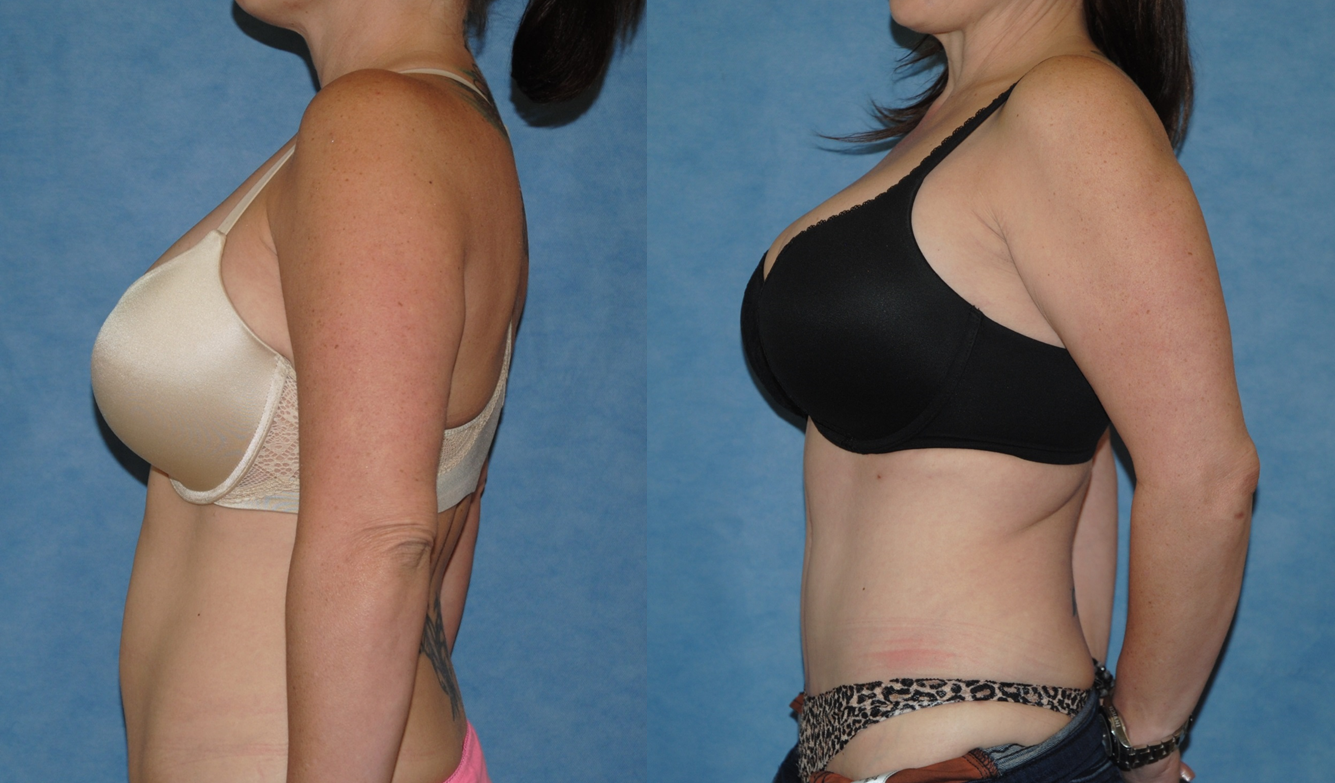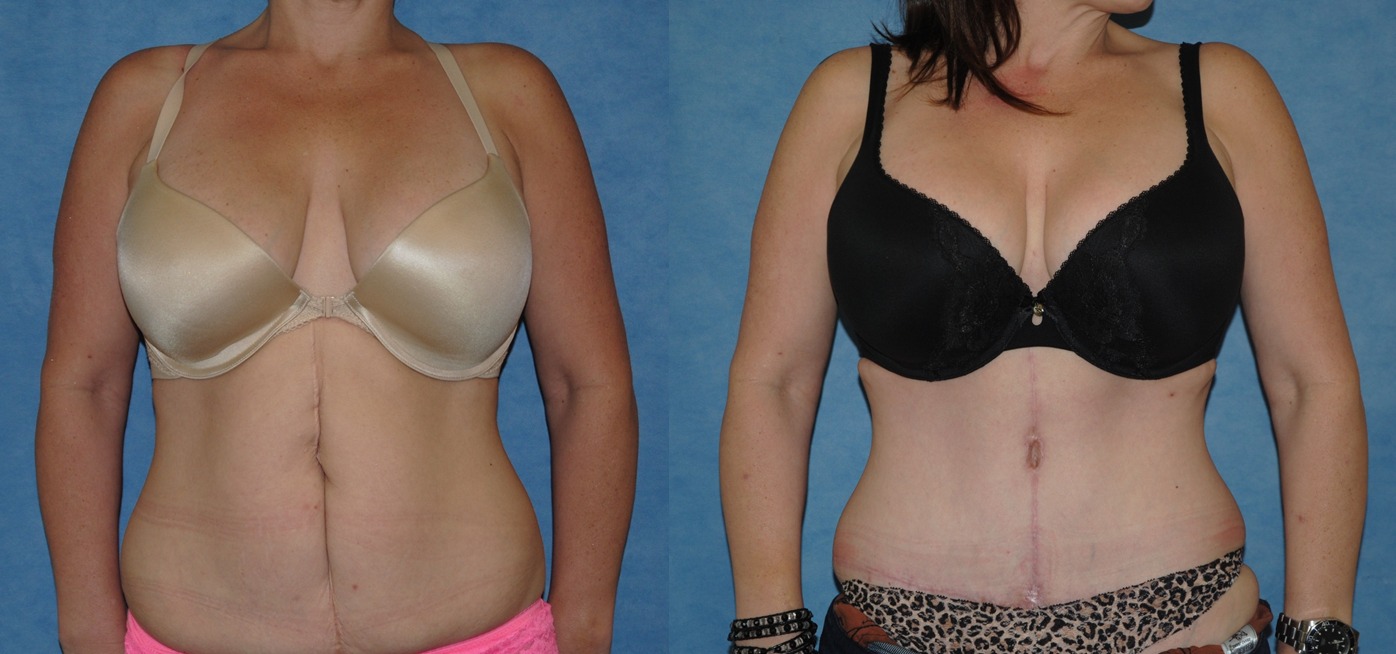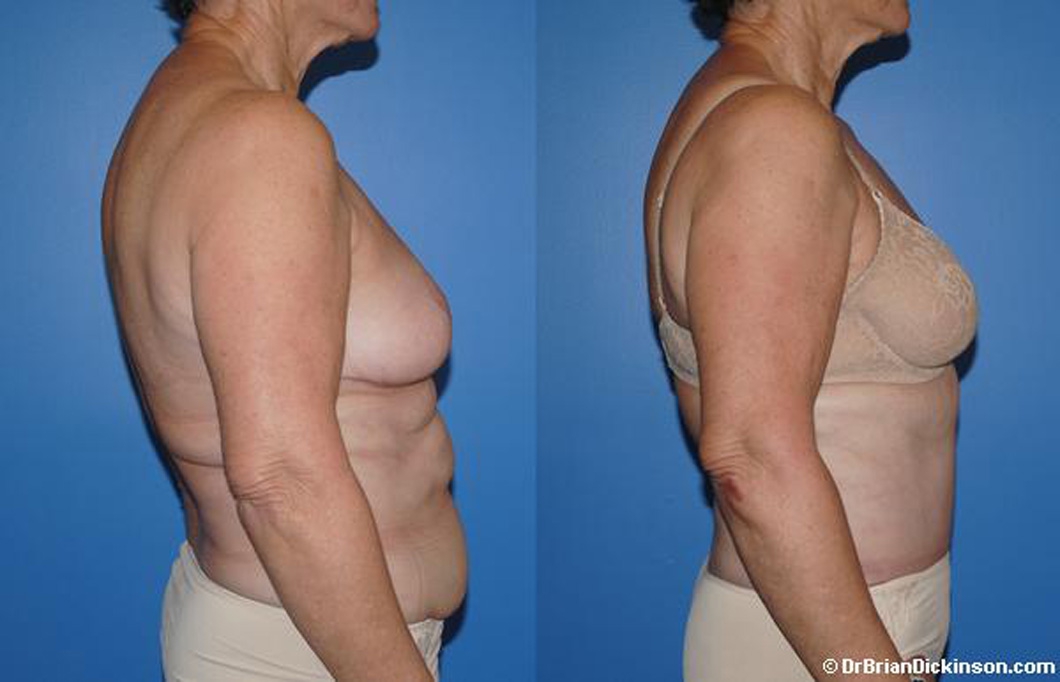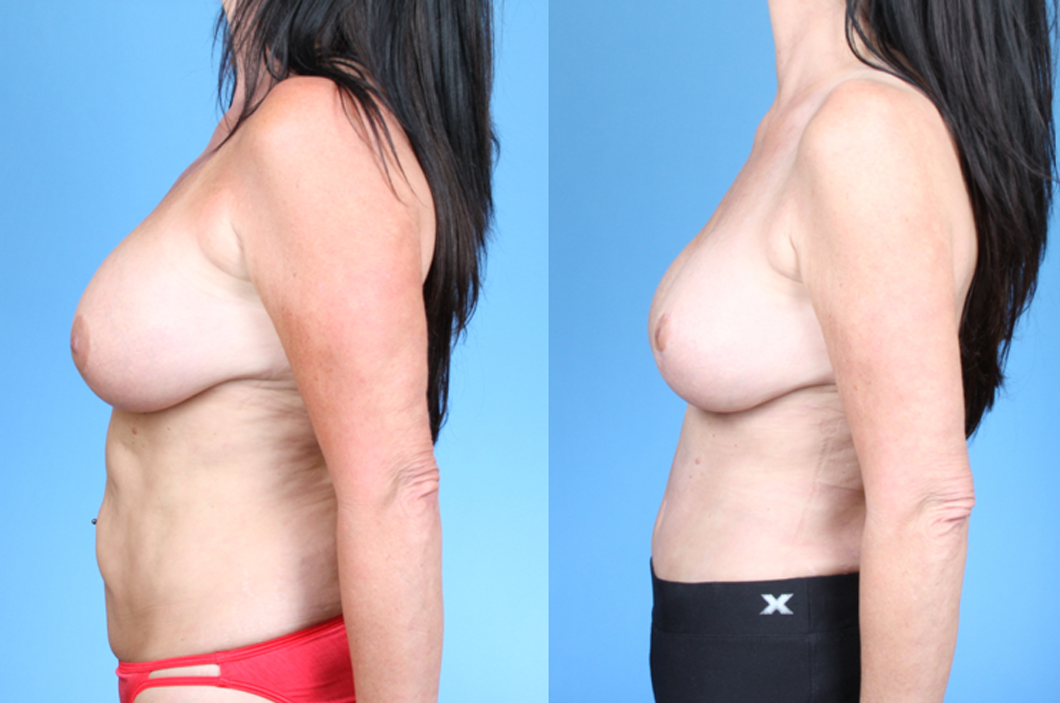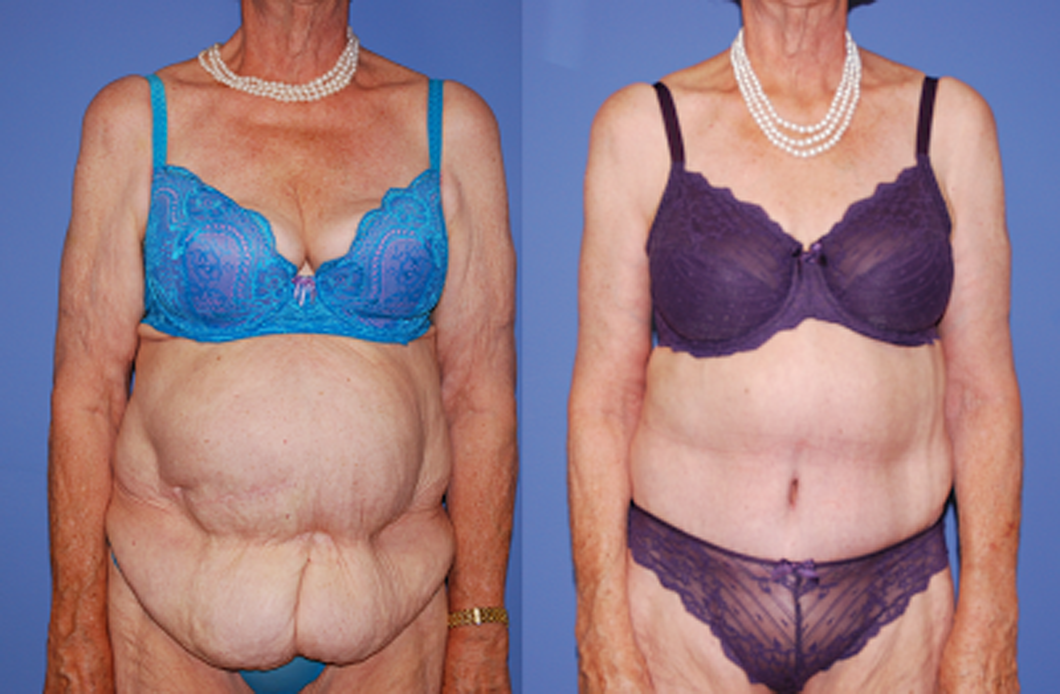Abdominoplasty in Dr. Dickinson’s Practice in Newport Beach, CA
Abdominoplasty is a common procedure performed in my practice in Newport Beach, CA. The typical patient is a woman who had multiple childbirths and who now has excess skin and stretch marks on her lower abdomen as well as abdominal wall laxity. The patients who get the best results post-abdominoplasty are patients who have good diet and exercise habits prior to the abdominoplasty and after the abdominoplasty. These patients will typically indicate during the initial consultation that despite a good diet and a commitment to an exercise regimen they can’t seem to improve the appearance of their lower abdomen. These patients have done sit-ups, core strengthening exercises, and cardiovascular exercises to a high level. Their overall body may be lean in the arms, legs and chest, but they have persistent laxity to their lower abdomen. The consistent training but lack of abdominal improvement has become frustrating, and they seek consultation to improve the appearance of their abdomen.
During the consultation we discuss the importance of proper weight training or resistance exercises to build muscle. The more muscle you have on your body, the higher is your metabolic rate. The higher the metabolic rate, the better your body is at burning energy and keeping extra weight off. We encourage resistance training in all patients prior to and after abdominoplasty.
The other group of patients who seek out abdominoplasty in my practice are patients who simply have a hard time losing weight and who are interested in losing weight. These women or men have had a busy lifestyle for several years either because of their job, children, or other factors in their life which have contributed to them gaining weight. Often in these patients we may take a staged approach to weight loss. The initial step is to start resistance training and cardiovascular exercise. The other initial step is to take control of your diet. This may include starting to eat breakfast, decreasing the amount of carbohydrates at night, or starting to eat salads during lunchtime. The goal of these steps to help you lose weight prior to surgery, but just as importantly for you to maintain the correct habits after your surgery to keep the weight off.
If we select a goal or target weight to reach prior to surgery, and you are still rapidly losing weight, we recommend moving surgery to a later date and then have surgery when you have plateaued with your weight loss. The abdominoplasty itself will help you lose weight from the skin that we remove, and your metabolic rate will increase after your surgery as your body expends energy trying to heal. Eating a diet high in protein after surgery will facilitate healing and help prevent weight gain.
On the other hand, if you have not reached a goal weight and are simply stuck, then we may not proceed with an abdominoplasty and instead perform liposuction first. Liposuction can help with weight loss and help your body lose weight with less downtime. Once you return to the gym after liposuction, you may find that begin losing weight rapidly.
Helping people lose weight or get their body back is an extremely rewarding process. If you are interested in an abdominoplasty or in improving your overall body contour, please contact my office at 949-612-8632 and schedule a consultation. My staff are extremely friendly and gladly help you. I look forward to working with you to achieve your goals.
Brian P. Dickinson, M.D.
Abdominoplasty Frequently Asked Questions
Yes. Frequently, after childbirth several times over, it is very difficult to regain the lower abdominal tone. This occurs because the normal anatomy of the rectus muscles become distorted. Instead of the rectus muscles running parallel to each other and in close proximity, the rectus muscles are splayed apart and there is a segment of abdominal wall which is not contracting. This space between the rectus muscles is called a rectus diastasis. This occurs from the stretching on the lower abdominal wall during pregnancy. One component of the abdominoplasty operation is the repair of the rectus diastasis. This component of the abdominoplasty is called rectus muscle plication. This is a very important component of abdominoplasty is people with lower abdominal wall laxity.
After multiple pregnancies, the skin on the lower abdomen becomes stretched beyond the capacity of the collagen and elastin fibers to recoil and stretch marks and extra skin persist despite rigorous diet and exercise. During the abdominoplasty operation sometimes all of this skin that contains stretch marks is excised. In patients who have a significantly large amount of stretch marks around their umbilicus, these stretch marks end up in the lower aspect of the abdomen and are not as bothersome.
Women are usually very satisfied with the results of a tummy tuck surgery. After six weeks of resting and recovering, you are ready to go back to the gym.
How people recover from surgery is extremely variable. It also depends on what was involved in each patient’s surgery. Men and women recover at different rates from a abdominoplasty, which is both objective and subjective. In my experience, women with better abdominal tone who require only skin and stretch marks to be removed return to their baseline sooner than women who require significant tightening of their abdominal muscles. This occurs similarly in men. In general, most of the pain and recovery associated with an abdominoplasty operation is secondary to the plication of the abdominal wall. Most women indicate that the pain with an abdominoplasty is significantly less than a c-section.
In our Newport Beach surgery center we will have you stay overnight one night in the surgery center after your abdominoplasty. That being said, abdominoplasty operations take place on Monday, Tuesday, or Thursday. You will be discharged from the surgery center the next morning after your abdominoplasty at around 6:30 a.m. During the night there will be excellent nurses who will give you medication for pain, for nausea, and for anxiety or blood pressure if you need it. You will drink clear liquid the night after your abdominoplasty such as apple juice, Jello, or broth.
You will often sleep through the entire night and then the next day I encourage you to walk. I encourage you to walk every day after that. The level of activity for the first week after surgery is just purposeful walking. You can walk to the bathroom, you can walk to eat dinner, and youy can walk to check the mail. You are NOT allowed to walk as if shopping at the mall or on the beach. When you do walk, I encourage you to walk straight upright. You will not hurt anything. The second week after the abdominoplasty, you can walk as if you are shopping at the mall or walking at the beach. I tell all patients to allow 4-6 weeks for full recovery until they can be back at the gym.
Mini tummy tuck is a partial abdominoplasty procedure usually designed to tighten the lower abdomen muscles below the umbilicus and remove some excess skin. A smaller incision is usually made during the procedure. It is extremely rare for a patient to be a candidate for this type of abdominoplasty. Most patients have rectus diastasis that extends all the way to the xiphoid process between the ribs. Repairing this requires exposure to do so effectively and this exposure usually requires a hip to hip incision. Rarely, does a patient have laxity just confined to below the umbilicus.
A full tummy tuck is for patients with a significant amount of excess skin, stretch marks, or both lower and upper abdominal fullness and requires a larger incision.
During the consultation, we will evaluate if your abdominal muscles and assess the amount of excess skin you have on your abdominal wall to determine which abdominoplasty procedure is best for you.
Liposuction is an excellent adjunct to a abdominoplasty but often best performed as a staged procedure. Quite frequently patients . Combination procedures are very effective when performed in the same aesthetic region, such as the breast lift with liposuction of the bra fat.
Patients will stay overnight in the surgery center for one night after the abdominoplasty. After the first night, patients will go home. In general the abdominoplasty recovery is better for patients who live locally or in the Los Angeles area. It is also my general policy to require patients stay in the immediate vicinity for the next 2 weeks. In that regard, it is rare for us to have out of town patients for the abdominoplasty procedure. Follow-up after the abdominoplasty is once a week for about six weeks. The drains are removed between one and two weeks and at each week we monitor your progress and inform you of your next activity level. Flying in and out of town for the abdominoplasty procedure can be a bit challenging. Remaining in the Newport Beach neighborhood for two to four weeks is best. The most common complication following abdominoplasty is a seroma. This tends to show up within four weeks following the surgery. Stating in town for four weeks after surgery is most helpful for your recovery.
It is our preference to do the abdominoplasty surgery as safely as possible for you. Depending upon your age and overall health, you will need laboratory analysis and/or medical clearance by your doctor. Dr. Dickinson asks all patients to eat healthy and exercise prior to their operations to make sure they are finely-tuned and ready to maintain their new body contour. We will go over all of the pre-operative planning in greater detail in your consultation. If you would like to see a general plan for your post-operative activity and follow-up you can download the grid below. Please call the office and make an appointment if you would like to proceed with abdominoplasty. These procedures are very rewarding for me and I hope we can help you reach you goals.
Brian P. Dickinson, M.D.
To download a copy of the Abdominoplasty Post-Operative Instructions please click here:
BPD MD Abdominoplasty Procedure Post-op and Medication Instructions. Version- August 5 2022
Take Me to the Abdominoplasty Blogs

